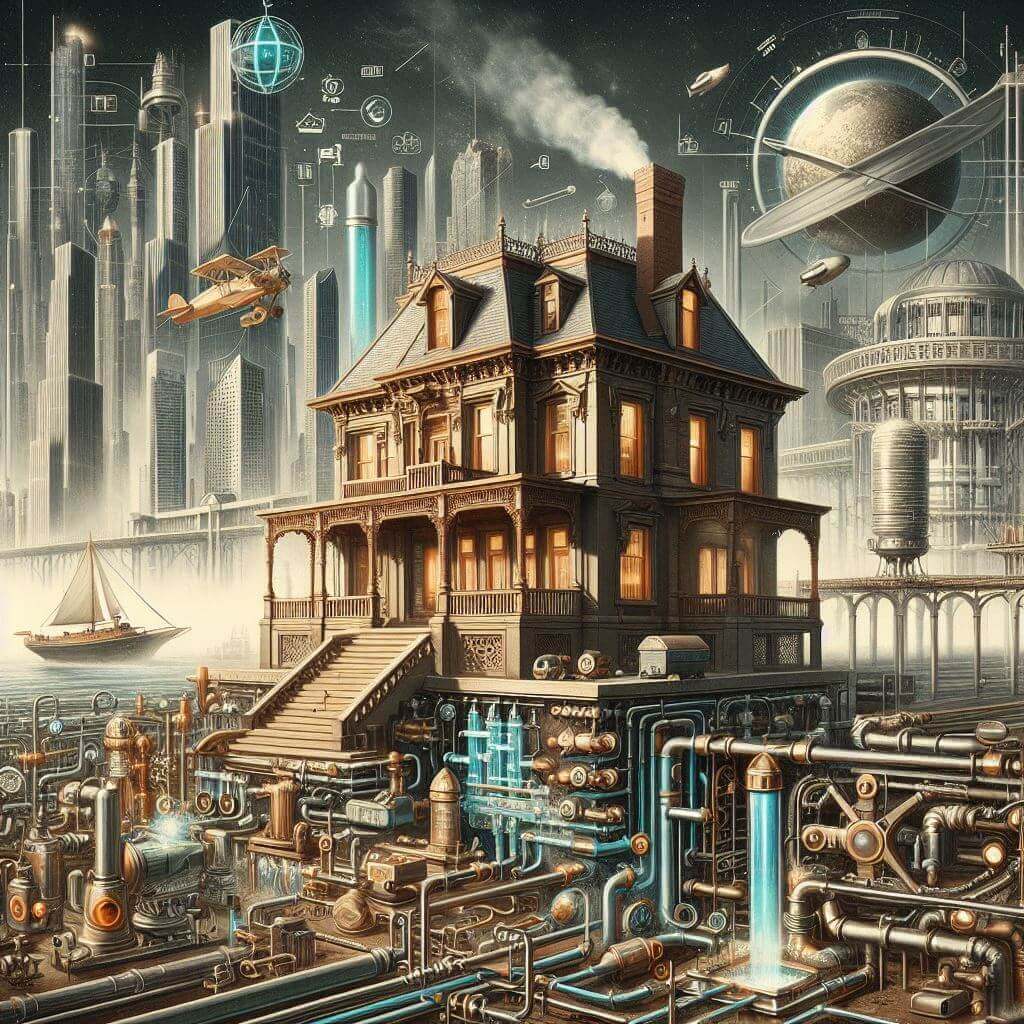Unraveling the Legal Plumbing Frameworks: A Comprehensive Guide
The plumbing industry operates within a web of regulations and Legal Plumbing Frameworks. Understanding these frameworks is crucial for practitioners, as they navigate the intricacies of Plumbing Regulations and Laws.
In-depth comprehension of Legal Compliance in Plumbing is essential to ensure adherence to Plumbing Industry Standards. These standards serve as the bedrock, dictating the permissible boundaries within which plumbing systems must operate.
Navigating Legal Boundaries in Plumbing: Understanding Compliance
Navigating the intricate maze of legal boundaries in the plumbing industry is pivotal for practitioners to ensure compliance with the extensive Legal Requirements for Plumbing installations. These regulations encompass a spectrum of factors, from the types of materials used to the specific methodologies employed in installations.
Understanding compliance starts with a comprehensive grasp of Plumbing Code Regulations. These regulations serve as a guidebook, outlining the permissible standards that every plumbing system must adhere to. From ensuring proper pipe sizing to outlining venting requirements, these regulations are the backbone of legal plumbing practices.
Transitioning into compliance also involves acknowledging the critical role of Legal Frameworks for Construction within the plumbing realm. These frameworks provide a structured approach, guiding professionals through the construction process while maintaining legal integrity. For instance, they dictate the adherence to specific building codes, ensuring the safety and durability of plumbing installations.
Moreover, delving deeper into the Legal Aspects of Plumbing Systems is essential to grasp the intricate relationship between legal mandates and system functionalities. From addressing cross-connection control to outlining backflow prevention methods, these legal aspects prioritize both safety and regulatory compliance.
Understanding the complexities of compliance goes beyond the surface level; it involves embracing a holistic approach that considers Governing Laws in Plumbing Practices. These laws are not static; they evolve with technological advancements and societal needs, shaping the landscape of the plumbing industry. For instance, they might encompass energy efficiency requirements or guidelines for sustainable plumbing practices.
Transitioning into the realm of Plumbing Industry Standards reveals the benchmark for excellence within legal frameworks. These standards aren’t mere suggestions; they are stringent measures set to ensure the highest quality and compliance. They cover a broad spectrum, from outlining installation procedures to mandating regular inspections, promoting a culture of accountability and professionalism within the industry.
Navigating legal boundaries in plumbing isn’t just about adhering to a set of rules; it’s about embracing a culture of compliance, innovation, and responsibility. These legal frameworks form the backbone of a thriving and ethically sound plumbing industry, where the synergy between legality and functionality ensures safe, durable, and efficient plumbing systems.
The Importance of Legal Structures in Plumbing Practices
Understanding the profound significance of legal structures within plumbing practices is foundational for professionals in the industry. It’s not merely about compliance; it’s about creating a framework that fosters safety, sustainability, and excellence in every installation.
Legal structures, encapsulated within Legal Plumbing Frameworks, delineate the guidelines and regulations governing the plumbing industry. These frameworks provide a roadmap, outlining the permissible boundaries and mandates that every practitioner must navigate to ensure adherence to the Legal Requirements for Plumbing installations.
Transitioning into the broader context, these legal structures are more than a set of rules—they are the bedrock upon which the entire plumbing industry stands. They encompass Plumbing Regulations and Laws, dictating the permissible practices and benchmarks that define the industry’s ethical and legal standards.
Exploring the Legal Infrastructure in Plumbing Construction
Exploring the legal infrastructure in plumbing construction unveils a crucial aspect often overlooked in the industry. Legal Frameworks for Construction form the blueprint upon which every plumbing project stands. They encompass a comprehensive set of regulations and guidelines that dictate every stage of construction, from planning to execution.
Transitioning into the specifics, these legal frameworks govern various aspects of plumbing construction, including materials used, installation methods, and safety protocols. Understanding and adhering to these frameworks ensure compliance with Legal Requirements for Plumbing, ensuring installations meet the highest standards of safety and functionality.
Moreover, these legal structures aren’t static; they evolve with technological advancements and societal needs. For instance, they might encompass the integration of eco-friendly materials or guidelines for sustainable plumbing practices, reflecting the industry’s commitment to environmental consciousness within the Plumbing Industry Standards.
Delving into the legal infrastructure in plumbing construction isn’t merely about navigating regulations; it’s about embracing a framework that ensures the durability, safety, and sustainability of every plumbing project, aligning with both legal mandates and industry best practices.

Unveiling Legal Plumbing Protocols for Comprehensive Installations
Unveiling the realm of legal plumbing protocols for comprehensive installations offers a profound insight into the meticulous guidelines and regulations governing every aspect of plumbing projects. These protocols, encapsulated within Comprehensive Legal Requirements for Plumbing Installations, set the standards for impeccable installations, ensuring functionality, safety, and compliance.
Transitioning into the specifics, these protocols encompass a myriad of criteria, including proper pipe sizing, material selection, and adherence to specific installation methodologies. Compliance with these comprehensive requirements is non-negotiable, as they serve as the backbone for every plumbing project, aligning with Plumbing Code Regulations.
Moreover, these protocols aren’t just a checklist; they are a testament to the commitment of the plumbing industry toward delivering excellence. They prioritize not only compliance but also innovation within legal boundaries, ensuring that every installation meets the highest benchmarks of quality and legality.
In essence, uncovering the nuances of legal plumbing protocols for comprehensive installations is about more than meeting regulations; it’s about ensuring a plumbing landscape where every project reflects precision, safety, and adherence to the highest standards, fostering a culture of professionalism and excellence.
Understanding Legal Compliance: A Deep Dive
A deeper analysis of Legal Compliance in Plumbing reveals the interplay between Plumbing Code Regulations and the practical implementation of plumbing systems. Ensuring alignment with these regulations is non-negotiable.
In plumbing design, the Legal Implications in Plumbing Design are crucial considerations. Balancing functionality and aesthetics while adhering to legalities is where the art and science of plumbing design converge.
Embracing Juridical Frameworks for Plumbing Practices
Navigating the Governing Laws in Plumbing Practices mandates a comprehensive understanding of Plumbing Juridical Norms. It requires a meticulous approach to ensure seamless adherence.
The Crucial Role of Legal Frameworks in Plumbing Design
Delving into the Legal Implications in Plumbing Design illuminates the significance of legal boundaries in the creative process. Achieving a balance between innovation and compliance is where the true artistry of plumbing design lies.
Adhering to Legalities: Upholding Plumbing Industry Standards
In the realm of plumbing, adherence to Plumbing Industry Standards is the cornerstone of professional integrity. This commitment ensures that every installation meets the highest benchmarks of quality and legality.
Crafting Plumbing Infrastructure within Legal Scaffolding
The creation of plumbing infrastructure necessitates adherence to Legal Scaffolding for Plumbing. This framework ensures that every foundational element aligns seamlessly with established legal protocols.
Ensuring Compliance: Legal Plumbing Protocols and Regulations
Ensuring compliance within the realm of plumbing isn’t just about following a set of rules—it’s about embracing a comprehensive framework encapsulated within Legal Plumbing Protocols and Regulations. These protocols serve as the guiding light, ensuring every plumbing installation meets stringent standards of safety, functionality, and legality.
Transitioning into the specifics, these protocols encompass a wide array of criteria, from specifying permissible materials to outlining installation methodologies. Compliance with these regulations isn’t negotiable; it’s the cornerstone for every plumbing project, aligning with the intricate Legal Requirements for Plumbing installations.
These regulations aren’t stagnant; they evolve in tandem with technological advancements and societal needs. For instance, they might incorporate innovative guidelines for sustainable plumbing practices or emphasize measures for water and energy conservation, reflecting the industry’s commitment to eco-friendly initiatives within the Plumbing Code Regulations.
The Intersection of Legalities and Plumbing Code Regulations
Plumbing systems operate within the confines of Plumbing Code Regulations. Understanding and implementing these regulations ensure that installations are not only functional but legally impeccable.
Navigating Complex Legal Plumbing Guidelines
Exploring the nuances of Exploring Intricate Legal Plumbing Guidelines requires a meticulous approach. It involves deciphering complex legal jargon to ensure accurate compliance.
Sustainable Practices: Aligning with Legal Plumbing Norms
Aligning with legal plumbing norms is pivotal for fostering sustainable practices within the plumbing industry. These norms, encapsulated within Legal Frameworks for Piping Systems, go beyond regulatory compliance; they pave the way for eco-conscious plumbing solutions.
Transitioning into the specifics, these legal norms prioritize environmental consciousness by promoting the integration of eco-friendly materials and methodologies. They align with the evolving Plumbing Industry Standards, emphasizing sustainability without compromising on functionality or safety.
Moreover, these norms signify a shift toward a greener approach in plumbing practices. They encompass guidelines for water conservation, energy-efficient systems, and waste reduction, aligning with the industry’s commitment to environmentally responsible plumbing solutions.
Embracing and adhering to legal plumbing norms isn’t just a legal obligation; it’s a step toward a sustainable future in the plumbing industry. It’s about balancing legality with environmental consciousness, forging a path where every plumbing project aligns with both legal mandates and eco-friendly initiatives.
Legal Frameworks in Plumbing Systems for Sustainable Solutions
Incorporating Legal Frameworks in Plumbing Systems fosters innovation in eco-friendly solutions. It’s a testament to how legalities can coalesce with technological advancements for a sustainable future.
A Comprehensive View: Addressing Legal Implications in Plumbing
Addressing Addressing Legal Implications in Plumbing Design necessitates a holistic viewpoint. It’s not merely about technical prowess; it’s about weaving legality into the fabric of design ingenuity.
Embracing Legal Plumbing Frameworks for a Sustainable Future
Understanding and implementing Legal Frameworks in Plumbing Systems pave the way for a sustainable and ethically sound future in the plumbing industry. It’s not just compliance; it’s a commitment to excellence.





